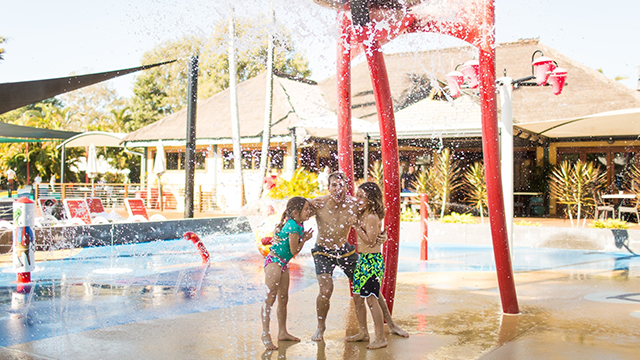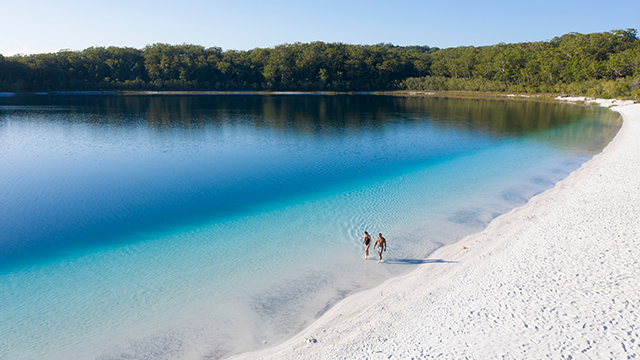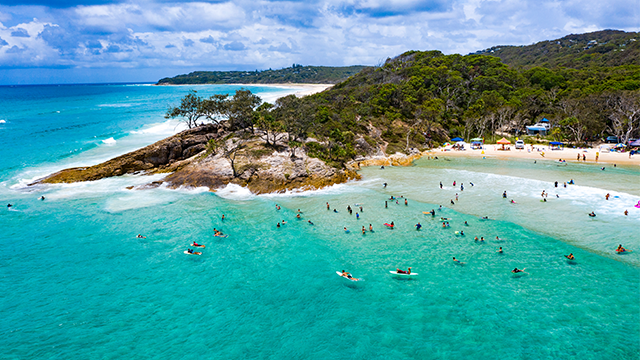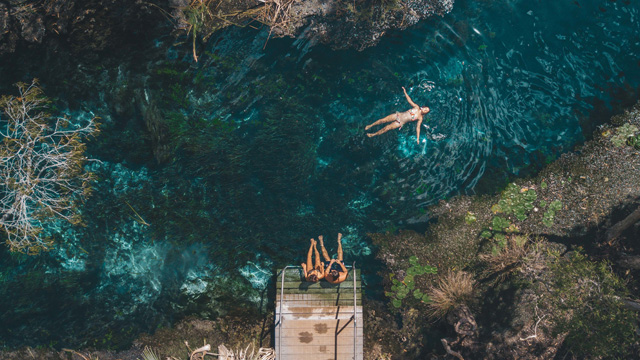The ultimate nature lover’s guide to Australia
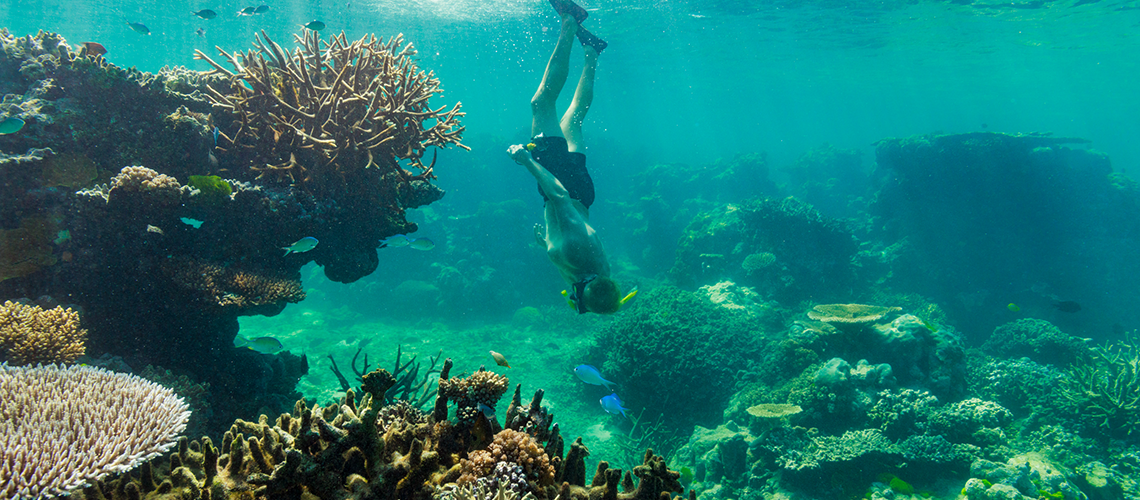
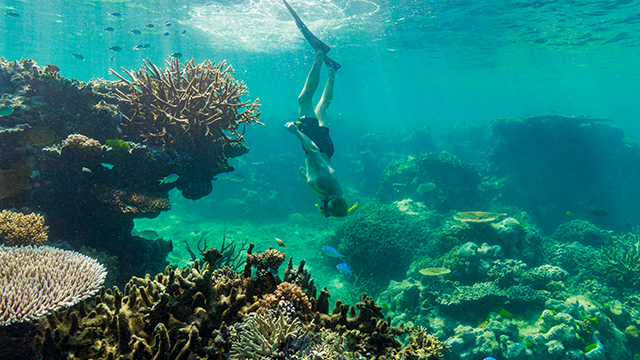
By Allie Voyage
23 February 2024
It’s no secret that the great land of Australia is known as a premier destination to nature lovers around the world. Whether it’s miraculous rock formations to marvel at or your desire to get up close and personal with some of Australia’s unique wildlife, Australia has you covered.
From prehistoric rainforests to sprawling underwater ecosystems, never-ending vistas from unimaginable heights and ancient birds roaming the shores, no matter where you travel in our wide country, you’ll experience the wonders of nature like nowhere else on earth.
Wave Rock, WA
Best for: Admiring nature’s architectural prowess
An unbelievable sight, Wave Rock is a breathtaking natural rock formation formed over millions of years. At 50 metres tall, one is dwarfed by the awe-inspiring ability of nature to form something so intricate. Wave Rock holds a lot of significance in the Dreaming. The local Ballardong people call it Katter Kich and believe the rock was formed when the Rainbow Serpent dragged their body over the land after drinking all the water. The place remains a respected area to all who visit.
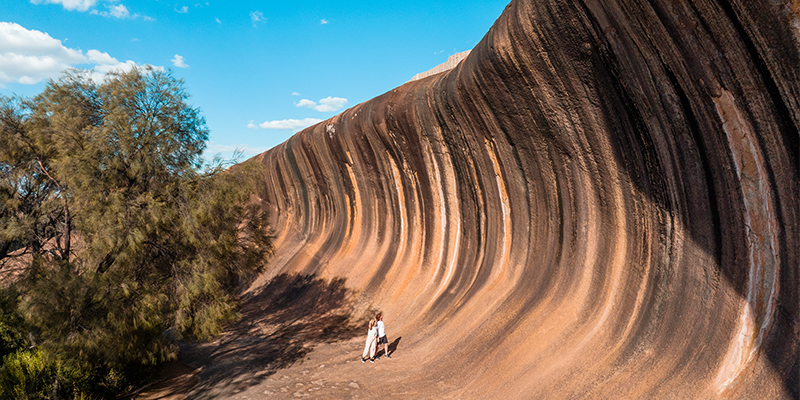
Wave Rock. Credit: Tourism Australia
The Daintree Rainforest, QLD
Best for: Surrounding yourself in prehistoric flora
The Daintree spans over 1,200 square kilometres and is the world’s oldest tropical rainforest. While there, look up and you’ll see vines that have been growing for 180 million years – that’s sure to put things into perspective! There are many ways to experience the Daintree, from trekking, to cruising, to croc-spotting, 4WDing and ziplining! Whether you are feeling adventurous or want to take in the tranquility, the Daintree Rainforest is a must-see.
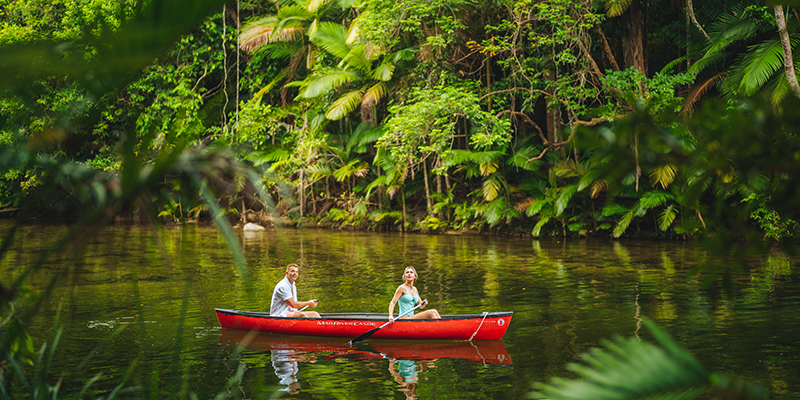
Canoeing in the Daintree Rainforest. Credit: Tourism and Events Queensland
Great Barrier Reef, QLD
Best for: Exploring the underwater world
The UNESCO Heritage-listed Great Barrier Reef is the world’s most extensive coral reef system. Ideal for anyone who loves to explore, the Great Barrier Reef is the perfect place to get up close with 40 different types of coral, 1500 fish species, and marine inhabitants such as sea turtles and dugongs. Significant on a global scale but also significantly under threat, the Great Barrier Reef needs our help to protect the unique diversity that it houses and has developed over millennia.
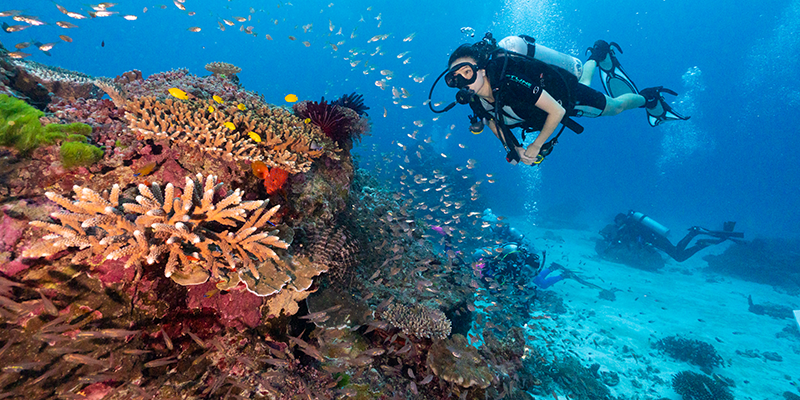
Diving the Great Barrier Reef. Credit: Tourism and Events Queensland
Rottnest Island, WA
Best for: Hanging with the happiest animals on earth
We’re blessed Down Under to be home to many species not seen anywhere else in the world. One of our greatest ambassadors is the quokka, who calls one small island off the west coast home. Quokkas are globally renowned as the happiest animal on the planet. To catch a glimpse of a wild one, you’ll need to take a trip to Wadjemup / Rottnest Island in Western Australia. With no natural predators, any time of the year is great for spotting quokkas and if you’re lucky, you may get the chance to take a selfie with this smiley faced critter.
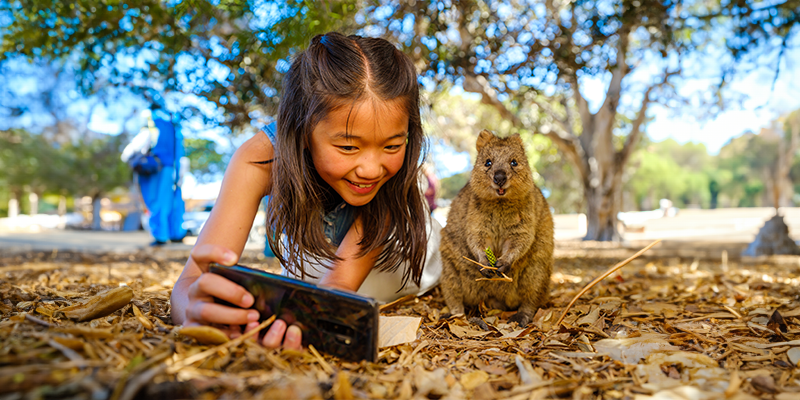
Selfies with a wild quokka. Credit: Tourism Western Australia
Uluru-Kata Tjuta National Park, NT
Best for: Viewing Australia’s icon
A trip to Australia’s Red Centre will not only get you the Instagram photos of your dreams, but it will also profoundly connect you with nature and allow you to reflect on the millions of years this land has existed before us.
Though a major tourist destination, Uluru can be difficult to travel to or navigate alone. Consider booking a small group tour with Intrepid Travel to make sure you get the most out of your journey, without having to worry about the nitty gritty details. My NRMA members get 5% off all Intrepid’s Australia and New Zealand tours.
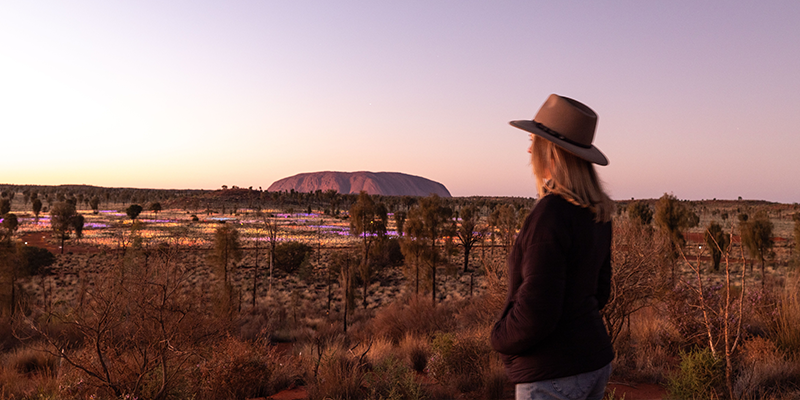
Field of Light at Uluru. Credit: Tourism NT/Sean Scott
Phillip Island, VIC
Best for: Witnessing a real life March of the Penguins
If you want to experience the majesty of penguins right before your eyes, it’s only a short 90-minute drive from Melbourne to Philip Island. Here, you’ll be able to watch the penguins parade every night back to their nests. Depending on the time of year, you may also see penguin chicks, fledglings, witness feeding time. In addition to these gorgeous black and white birds, Phillip Island is home to wallabies, bandicoots, and Cape Barron Geese. A perfect day adventure for the wildlife lover.
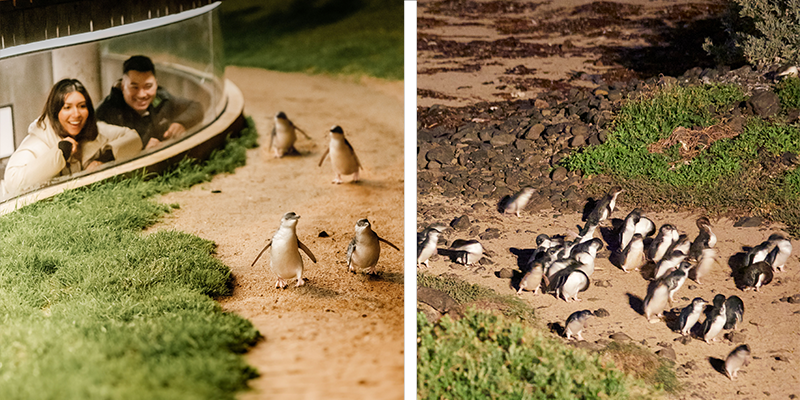
Penguin Parade at Phillip Island. Credit: Visit Victoria
Mission Beach, QLD
Best for: Spotting dinosaurs (cassowaries)
Standing on the shore of any beach in Australia can be a humbling experience. To know you are standing on the edge of the continent, looking out into the never-ending ocean, is a profound joy. Mission Beach in far north Queensland offers an excellent opportunity to experience this. Not only will you be able to snorkel the reef, take a dip in the ocean, trek the rainforest, and immerse yourself in local hospitality, but you’re also very likely to see a wandering cassowary or two. The area around Mission Beach is home to the highest concentration of cassowaries in Australia and is even known as the Cassowary Coast. Remember to view these prehistoric creatures from a safe distance. They can be mesmerising to look at but, like most wild animals, can cause harm if you get too close.
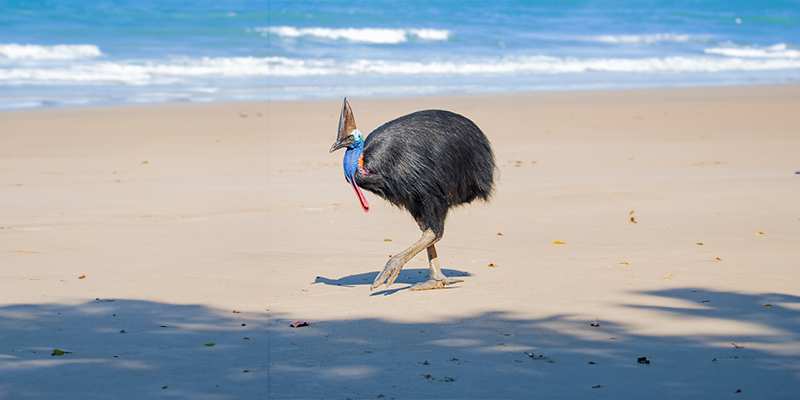
A wild cassowary. Credit: Cormorant
REMEMBER: WILDLIFE ARE WILD |
|---|
|
Never feed, handle or play with wildlife. Do not approach a distressed animal. Report injured, sick or orphaned wildlife to authorities
|
Ningaloo Reef, WA
Best for: Swimming with giants
A popular bucket list item for many Aussies – and something we’re known around the world for – is swimming with sharks. While you might be picturing the ferocious jaws of a great white, there are certainly other sharks that share our waters. The largest of these is the breathtaking whale shark. Along the coast of northern Western Australia, swimmers can dive beside these beautiful creatures and be dwarfed by their majesty while taking in an aquatic world unlike any other. As a diver, you’ll likely encounter an entire menagerie of sea animals on your swim, all living peacefully together as you observe the tranquility of underwater life.
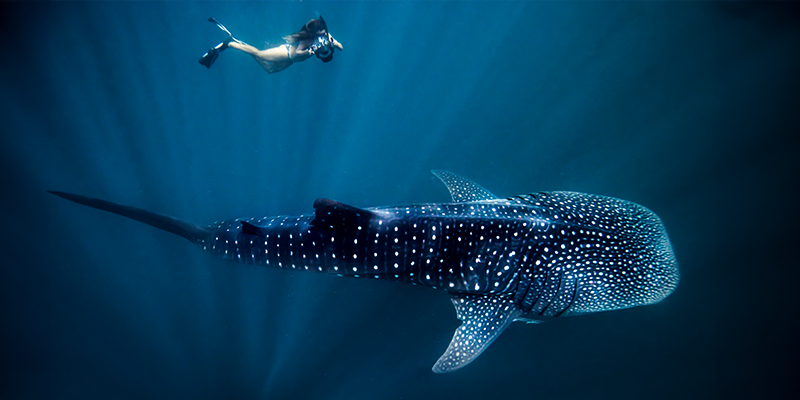
Swimming with whale sharks. Credit: Tourism Western Australia
K’gari, QLD
Best for: Delving deep into dreamtime stories
On the sand island of K’gari, off the coast of Queensland, there is archaeological evidence of First Nations inhabitants from 5000 years ago. Though the Butchulla people likely have a much longer history on the island, as suggested by their stories. K’gari is full of heritage sites of spiritual, social and archaeological significance. Middens, scarred trees, and campsites are further proof of the Butchulla custodianship of this land. You may be surprised to find that despite being an island primarily of sand, K’gari boasts lakes, woodlands, and rainforests, all coexisting in this splendid space.
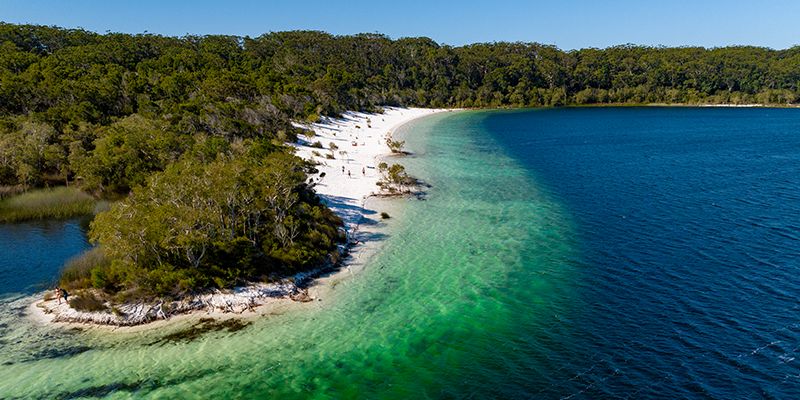
K’gari. Credit: Tourism and Events Queensland
Cradle Mountain, TAS
Best for: Being on top of the world
Don’t worry, you don’t have to climb to the top of Cradle Mountain to feel like you’re in another world. In fact, you don’t need to climb at all. Cradle Mountain offers many ways to experience its beauty from ground level and even in the air. You can take a leisurely stroll around Dove Lake or embark on a six-day trek on the Overland Track. Visitors can enjoy breathtaking views of rugged mountain peaks, ancient rainforests, and crystal-clear lakes from various vantage points throughout the national park.
At the end of the expedition, stay at Cradle Mountain Hotel and relax with discounts and My NRMA benefits. One of the highlights of the area is the high likelihood of spotting unique wildlife such as wombats and Tasmanian devils.
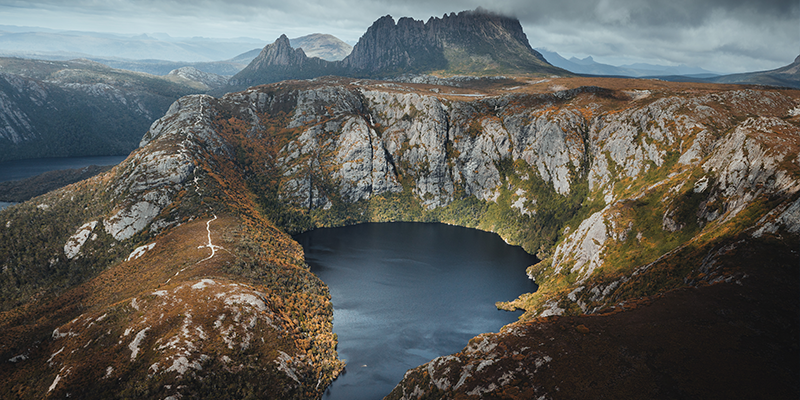
Crater Lake, Cradle Mountain. Credit: Jason Charles Hill
My NRMA members save on travel, accommodation, and more
Enjoy benefits across Australia on food, stays, flights, and car hire







